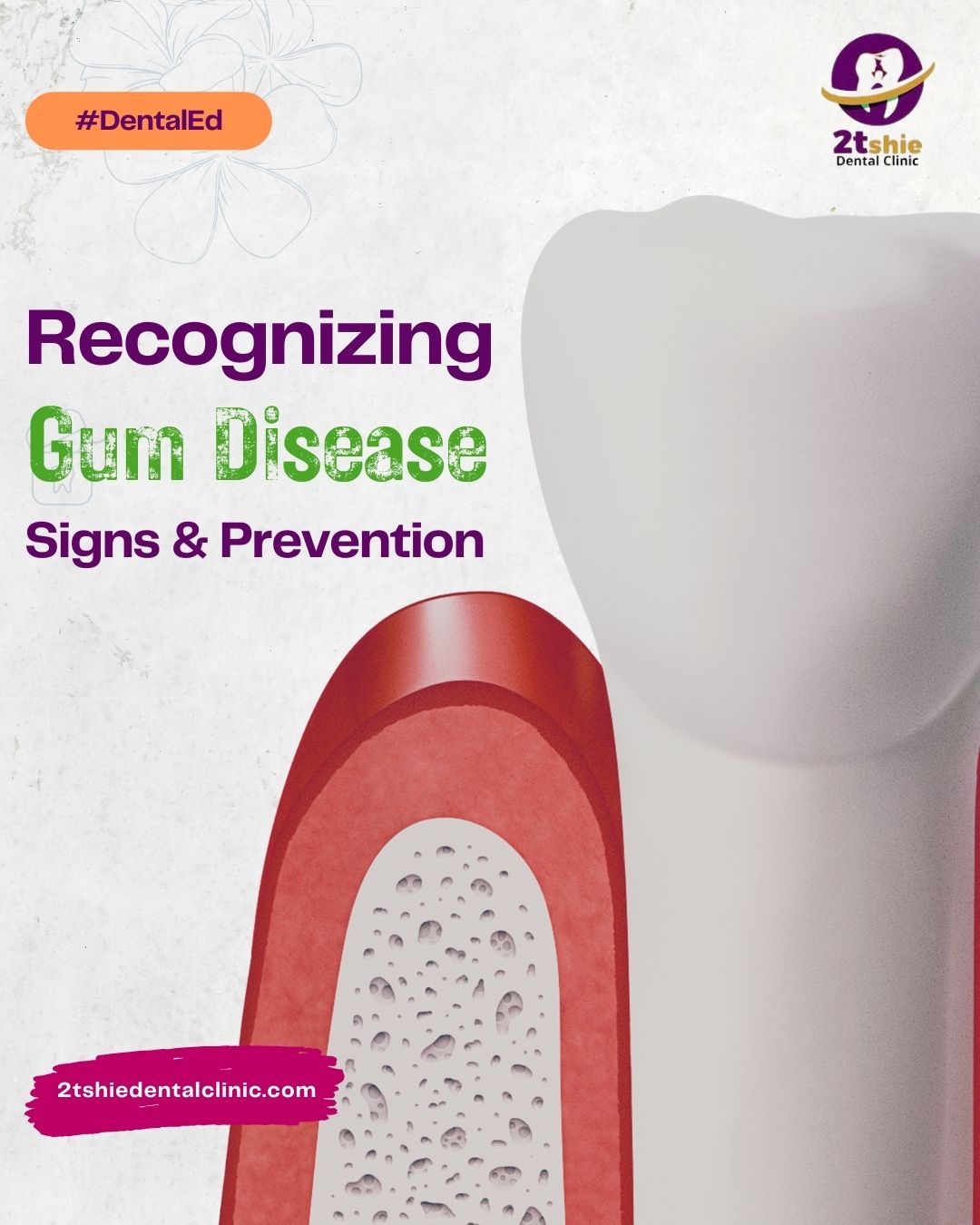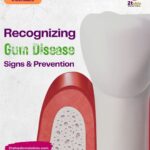
Gum disease, also known as periodontal disease, is one of the most common oral health problems worldwide. It can start subtly but progress into a serious condition that affects not only your mouth but also your overall health. The good news? With the right awareness and habits, gum disease is both recognizable and preventable.
In this article, we’ll explore the signs of gum disease, how it develops, and the practical steps you can take to keep your gums healthy.
What is Gum Disease?
Gum disease is an inflammation and infection of the tissues that support your teeth. It usually starts with the buildup of plaque. Plaque is a sticky film of bacteria on your teeth. If not removed through proper brushing and flossing, plaque hardens into tartar, which irritates your gums.
There are two main stages:
- Gingivitis – The early stage, where gums become red, swollen, and may bleed easily. Gingivitis is reversible with good oral care.
- Periodontitis – The advanced stage, where gums pull away from the teeth, bone loss occurs, and tooth loss becomes possible.
Common Signs of Gum Disease
Recognizing gum disease early can save your smile — and your health. Look out for these warning signs:
- Red, swollen, or tender gums
- Bleeding gums during brushing or flossing
- Persistent bad breath or a bad taste in your mouth
- Receding gums (teeth look longer)
- Loose or shifting teeth
- Pus between the teeth and gums
If you notice any of these symptoms, schedule a dental check-up immediately.
Risk Factors for Gum Disease
Certain habits and health conditions can increase your risk:
- Poor oral hygiene
- Smoking or tobacco use
- Diabetes
- Hormonal changes (pregnancy, menopause)
- Stress
- Genetics
- Certain medications that reduce saliva flow
How to Prevent Gum Disease
The best defense against gum disease is consistent oral hygiene and healthy lifestyle choices. Here’s what you can do:
1. Brush Twice a Day
Use a soft-bristled toothbrush and fluoride toothpaste. Brush gently along the gum line to remove plaque.
2. Floss Daily
Flossing removes food particles and plaque from between your teeth where your toothbrush can’t reach.
3. Visit Your Dentist Regularly
Schedule professional cleanings and check-ups every six months (or more often if recommended).
4. Quit Smoking
Tobacco use is a major risk factor for gum disease and slows healing.
5. Eat a Balanced Diet
Foods rich in vitamins C and D, calcium, and antioxidants help keep your gums healthy.
6. Manage Health Conditions
Control diabetes and other systemic illnesses that may affect gum health.
When to See a Dentist
Don’t wait until you’re in pain. Early detection is key to reversing gingivitis and preventing periodontitis. If you notice bleeding gums, persistent bad breath, or gum recession, see a dental professional right away.
TL:DR
Gum disease is common but preventable. By recognizing early signs and practicing consistent oral care, you can protect your smile and overall health. Your gums deserve as much attention as your teeth — so treat them kindly, and they’ll take care of you.



